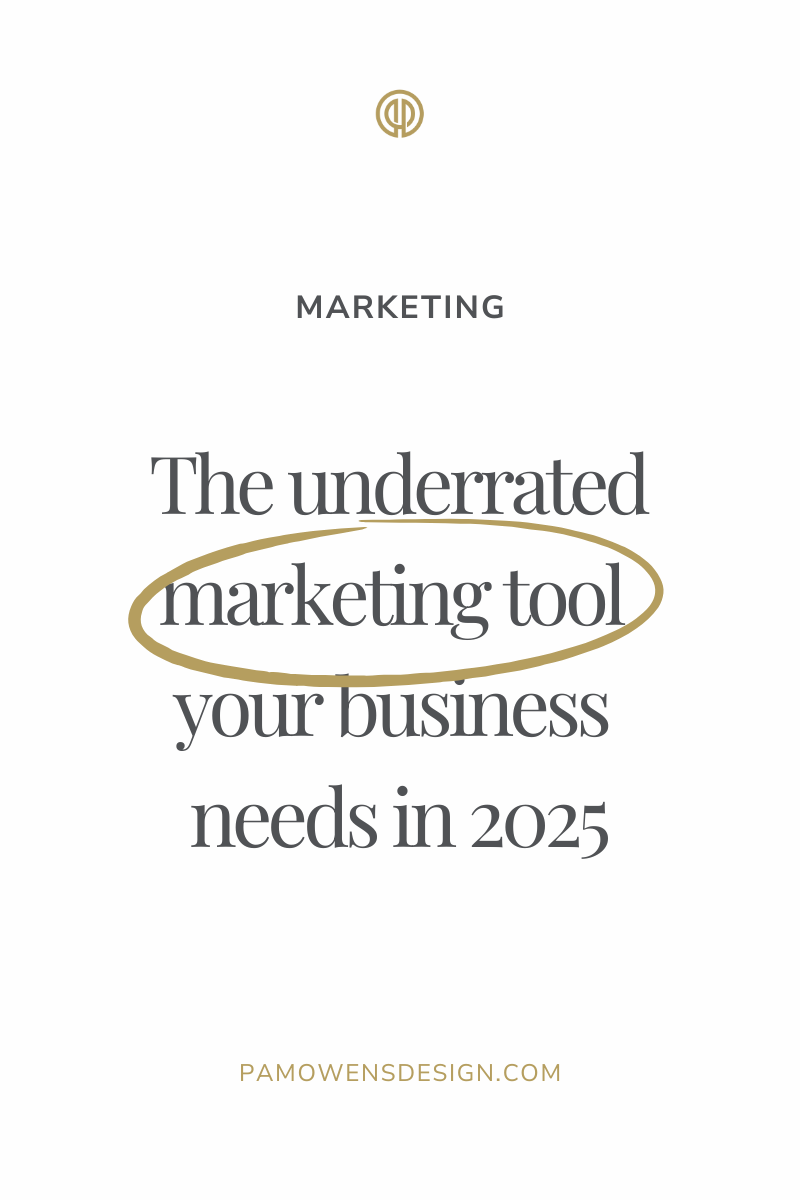As a business owner, you might wonder if building email lists is worth your time. I was right there where you are just a few months ago. Adding a new service (digital products) is happening at Pam Owens Design in 2025. To generate enough revenue with this service, I’ll need to reach lots of new people. That’s where an email lists will come in handy. I’m building from the ground up, just like you.
Are you wondering if email lists are even right for you, what you can do with them, and the benefits the could bring to your business? You may be surprised by some of the examples below.
How to identify if your business needs email lists
Email lists are crucial for businesses that:
- Want to stay connected with customers. For example, if you’re a home remodeler, you can send monthly updates about current trends, before-and-after photos of recent projects, or seasonal maintenance tips.
- Offer time-sensitive promotions. A boutique offering a weekend sale or an interior designer promoting holiday decorating services would benefit from immediate email access to their audience.
- Sell products or services online. If you’re a custom furniture maker, email lists let you showcase new designs and take pre-orders directly.
- Share expertise or resources. Coaches or consultants can send weekly tips or guides to help their audience solve specific challenges, like how to organize their workspace or grow their social media following.
What will email lists do for you?
Your email lists can become versatile tools to help grow your business. For instance:
- Build trust with your audience. If you’re a photographer, share tips for preparing for a photoshoot or behind-the-scenes stories to show the personal side of your work.
- Announce new offerings. A fitness coach could introduce a new class or share early access to a personalized training program.
- Drive website traffic. Bloggers can link to their latest articles, while e-commerce store owners can direct customers to limited-time product collections.
- Promote loyalty programs. For example, a salon could reward frequent clients with special discounts and referral bonuses.
- Get customer feedback. Restaurants could send surveys to get ideas for new menu items or gather feedback on customer experience.
Still not sure about building email lists?
Here’s why investing in list building is worth your time:
- Direct access to your audience. Unlike social media, where algorithms decide who sees your posts, emails land directly in inboxes.
- Higher engagement. A florist sharing exclusive tips for keeping bouquets fresh can get more interaction than a post buried on social media.
- Cost-effective marketing. Sending a weekly newsletter costs a fraction of paid ads and often brings better results.
- Stronger relationships. A yoga instructor could send personalized class recommendations based on a student’s past preferences, deepening their connection.
- Improved conversion rates. Emails often lead to more sales than social media posts—especially for offers like early bird discounts or exclusive bundles.
Why would I need more than one email list?
Well, that’s where segmenting (aka tagging, or labeling) comes into play. Email segments are groups of subscribers organized based on specific criteria to send targeted, relevant content. Here are examples of email segments that could be valuable for your business:
1. By stage in the customer journey
- Prospects: People who signed up for your lead magnet but haven’t purchased yet.
- First-time customers: Recent buyers who might need onboarding or follow-up support.
- Repeat customers: Loyal clients who may respond well to upsell opportunities.
- Inactive subscribers: People who haven’t opened an email in 90+ days, needing re-engagement.
2. By interests or services
- Website design: Subscribers interested in website-related services, such as Showit templates.
- Brand development: Subscribers who downloaded a resource about brand strategy or logo design.
- Marketing help: Subscribers engaged with marketing-related content like email templates or strategy tips.
3. By demographics
- Moms starting businesses: Target audience segment for personalized encouragement and tools.
- Contractors or designers: A professional audience needing industry-specific templates or services.
4. By engagement level
- Engaged subscribers: Those who opened your last 5 emails or clicked a recent link.
- Unengaged subscribers: Those who haven’t interacted in a while and might need a win-back campaign.
5. By behavior
- Clicked a specific link: E.g., subscribers who clicked on the Flodesk affiliate link.
- Visited your shop: Users who browsed your templates but didn’t purchase.
- Webinar attendees: People who attended a recent live event or watched a recording.
6. By geography
- Local clients: For events, meetups, or services available in specific areas like Northern Virginia.
- National/international subscribers: For online products like templates or virtual consultations.
I’ll bet you and I are on many email lists already – and if the business who owns those lists is smart, you’re in multiple segments.
Whether you’re a small business owner, a solopreneur, or a creative professional, building email lists is one of the most effective ways to grow your brand and deepen your connection with your audience. I haven’t met one business owner who regrets building an email list. As a matter of fact, most people tell me that the ONE THING they wish they’d started doing long before they did is… build an email list.
If you’re ready to get started or need help creating a strategy, reach out and ask for some help. My 15-minute consultations don’t cost a thing. Message me to schedule one now and pick my brain.
Oh, and if you’re wondering where to get started, check out the solutions at Flodesk – use this link for 50% off your first year.
The underrated marketing tool

grab this guide »
- How to attract and book the right clients
- Ways to refine your messaging and stand out
- Strategies to position your brand as the go-to choice
- Simple website tweaks to boost conversions
- How to make your brand work for you